A Traverse of Majesty: Climbing Mount Apo from Kapatagan to Bansalan
The Trail Where Clouds and Spirits Rise
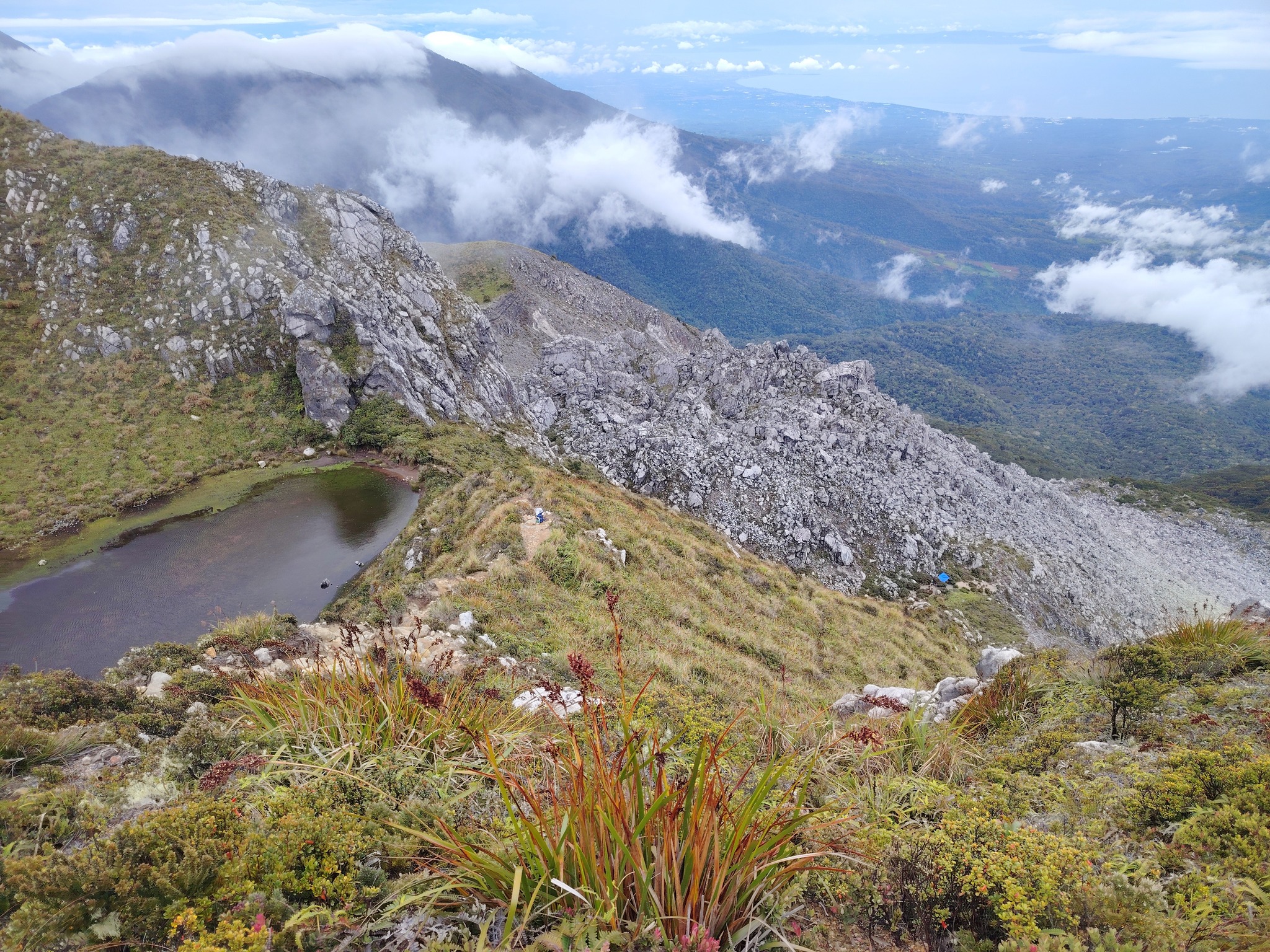 Mount Apo has long loomed in my imagination — not only as the tallest mountain in the Philippines but also as a living classroom for sustainable tourism. My visit was not just a personal challenge; it was part of my ongoing research on Socio-Economic Development for Samar Island, where I explore tourism as a powerful catalyst for local economies. Having visited ecotourism sites in the Philippines and abroad, I saw in Mount Apo a potential model for Mt. Huraw, the tallest in Samar. This climb was more than a test of endurance; it was a journey of learning — about nature, culture, and management practices we could adopt back home.
Mount Apo has long loomed in my imagination — not only as the tallest mountain in the Philippines but also as a living classroom for sustainable tourism. My visit was not just a personal challenge; it was part of my ongoing research on Socio-Economic Development for Samar Island, where I explore tourism as a powerful catalyst for local economies. Having visited ecotourism sites in the Philippines and abroad, I saw in Mount Apo a potential model for Mt. Huraw, the tallest in Samar. This climb was more than a test of endurance; it was a journey of learning — about nature, culture, and management practices we could adopt back home.
Before the Climb: Preparation is the First Summit
This kind of climb demands more than enthusiasm. Weeks before Apo, I committed to practice hikes and long jogs to build stamina. We traveled light: most equipment like tents and cooking gear were rented in Davao City. Knowing what’s essential only — trail food, hydration packs, warm and light clothing, waterproofs — helped reduce baggage volume and avoid unnecessary strain. The cold up there is unforgiving, especially when clothes get wet. Jackets, sweatpants, extra socks, and waterproof bags are not optional — they’re survival tools. Blogs from past climbers were also helpful in preparing both mentally and logistically.
Day 1: From Cabbage Fields to Cloud Forests
The journey began at Baruring, Digos (1,000 MASL), where we completed the mandatory registration, presented our medical certificates (dated within 3 days), and hired local porters (₱750/day for 15kg, with an excess fee of ₱75/kg). We then ascended toward Sitio Culan, Brgy. Sibulan (1,100 MASL) — passing vibrant high-value crop farms of carrots, cabbages, potatoes, and flowers.
By 9:00 AM, we entered the forest zone marked with orange trail ribbons, making navigation easier. Though scenic, the climb was taxing — a reminder that fitness is key. Water and trail food sustained me as we passed a reforestation site, where we paid a ₱25 seedling contribution. Unfortunately, the growth seemed sparse despite the foot traffic — an ecological irony.
We reached Basakan Camp (11:45 AM) for lunch, Bugha-Anan (12:10 PM) to rest, and finally Big Rock Eco-Camp (1:24 PM) — a site with a frog-shaped boulder and a misleading sign: “1 km to camp,” with the guide telling us, 1 km mean one hour, so we believed. The real climb to Tinikaran Camp (2,083 MASL) took nearly two hours, arriving around 3:35 PM. After a hearty meal, we slept early, bracing for an early ascent.
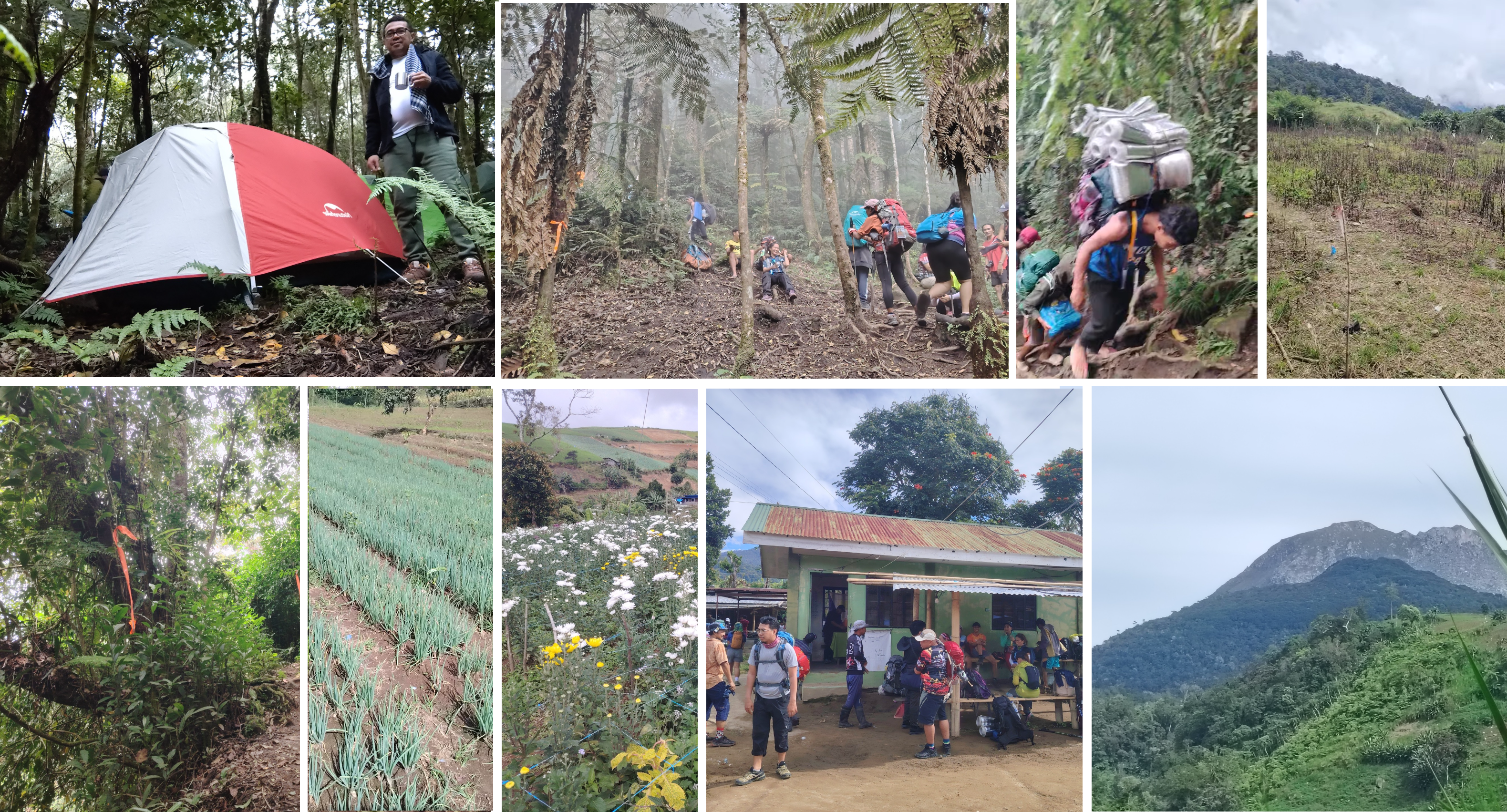
Day 2: Into the Boulder Lands and Up to the Sky
By 1:00 AM, we awoke, packed up, and hit the trail by 3:00 AM. Recent typhoon damage made the path tougher — fallen trees and a dim headlamp slowed my pace. I borrowed light from other climbers’ lamps and reached the boulder zone (4:53 AM, 2,300 MASL). I waited 30 minutes for my Samar teammates, then pushed forward alone.
The sulfur vents filled the air with a sharp, unpleasant smell. Lacking a proper mask, I used cloth — ineffective, but luckily the wind blew the fumes away. Along the climb, I found and tasted edible wild black berries. At the White Sand area, a surreal volcanic outcrop, I again paused to wait, but moved on at 9:20 AM, tackling the 87° slope up to the crater.
By 9:40 AM, I reached Apo’s crater lake — a site once scorched by the 2016 fire that led to major reforms: no camping near the lake, stricter carrying capacity (rumored to be 75 to 300 climbers daily), and higher tourism fees.
At 10:20 AM, I stood at the Digos Peak, my summit. Clouds passed over in waves as I waited for my Samar team, who arrived around 12:00 noon. Of the multiple peaks, I only conquered one — but it was enough.
The descent to Camp Reyes (2,360 MASL) was a 4-hour ordeal in heavy rain. My disposable raincoat helped, but the grassy, treeless trail became slippery. Many slipped. The campsite was a relief — though its comfort room was destroyed, making sanitation a serious issue. That night, soaked and cold, I drank a little whiskey and bundled up in my sleeping bag, managing to sleep despite the shivers.
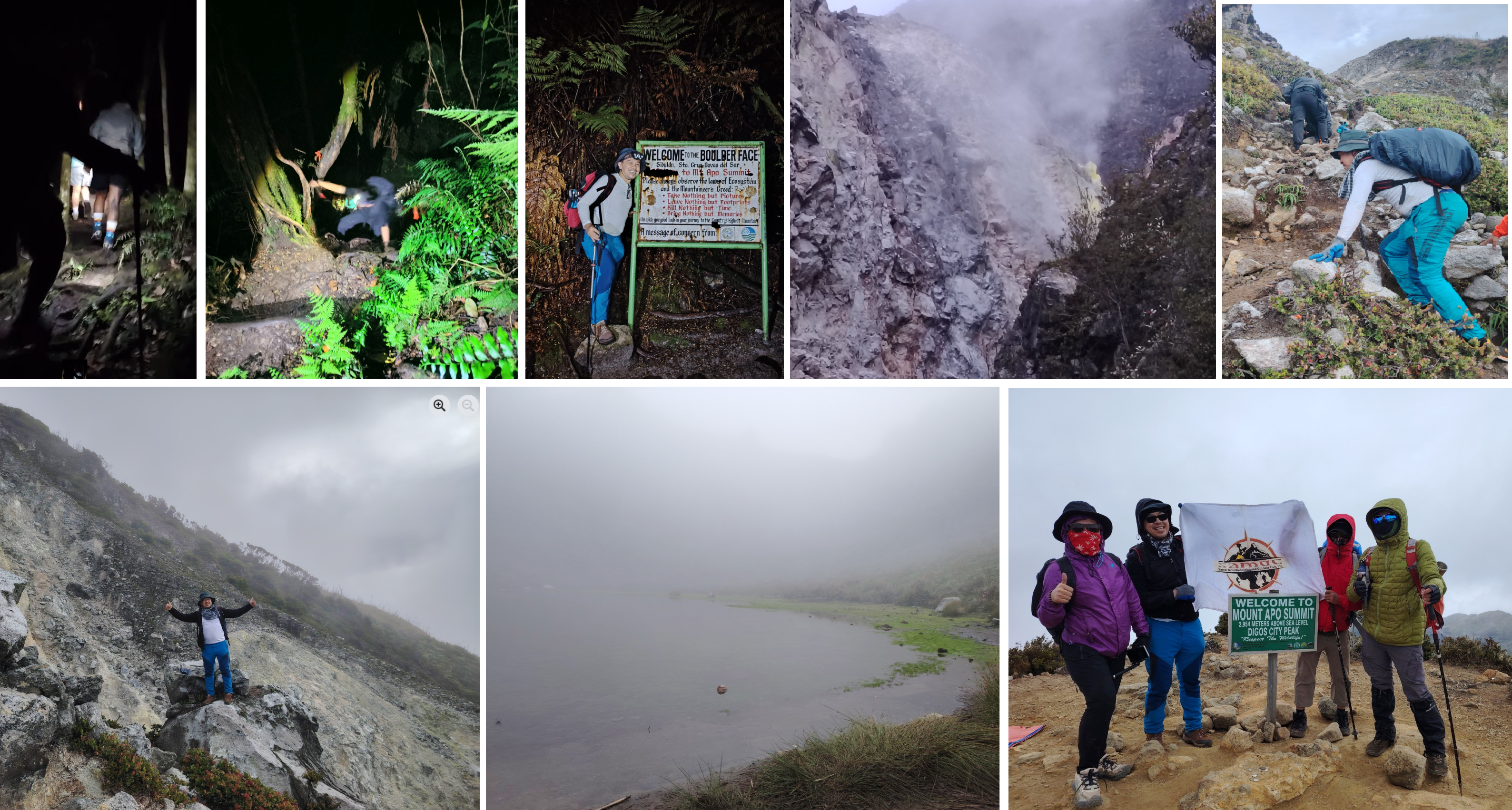
Day 3: Forest Farewell to Farmlands and Freedom
We departed Camp Reyes at 7:45 AM, stopping to fetch water from a stream — sadly, surrounded by trash and careless cleaning practices. It was disheartening to see ecotourism's dark side. Yet as we hiked, the mountain’s grandeur returned, revealing a greener, more forested side than the boulder fields of Digos.
At 10:15 AM, we entered farmlands, then detoured into the forest to avoid the heat before emerging onto open highland fields with sweeping views of coffee farms and cultivated crops.
By 11:00 AM, I arrived at the Bansalan exit station, followed by a final 20-minute walk to the pick-up point. In total, we descended almost 1,000 meters that day — leaving the summit behind but carrying its lessons with us.
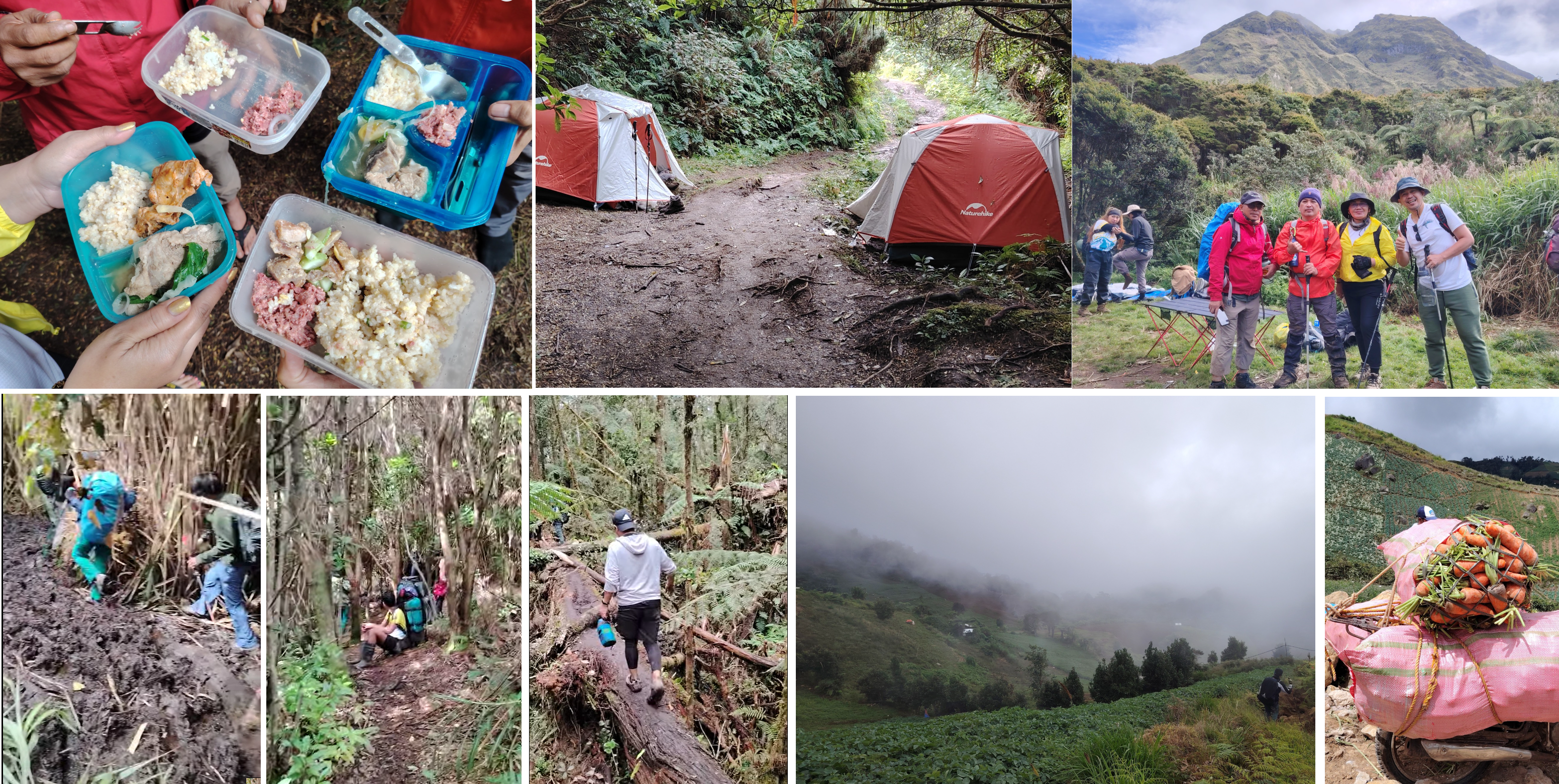
Reflections on Mount Apo and the Future of Samar
Mount Apo is not just a summit — it is a blueprint, albeit an imperfect one. It represents a delicate balance between tourism and regulation, culture and commerce, nature and human activity. But that balance still wavers. As I climbed, I encountered stark reminders that sustainability is not just a policy — it is a lived practice, one that demands constant vigilance and community engagement.
Despite the mountain’s protected status, I saw violations of the "Leave No Trace" principle almost everywhere: rocks defaced with vandals’ markings, plastic waste scattered across trails, and makeshift restrooms that are either insufficient or unusable. Sanitation remains a serious concern — with many climbers resorting to open defecation, and drinking water sources contaminated by indiscriminate waste disposal. One such site, where climbers fetched water for drinking and cooking, was surrounded by garbage.
There is a clear gap in monitoring and management. The presence of tourists in large numbers demands that campsites and facilities be more robustly maintained. But more than infrastructure, what’s missing is orientation — every climber should receive a proper pre-climb briefing about environmental responsibility, and perhaps a post-climb debriefing to reflect on the experience and reinforce the ethic of stewardship.
I came to Mount Apo not just as a climber, but as a researcher seeking insights into ecotourism models. I interviewed fellow climbers, local guides, porters, and tour operators. While some were generous with their stories, I found a surprising absence of structured information and storytelling. For a site so majestic and culturally significant, the experience felt hollow in terms of environmental education and cultural interpretation.
The trek was purely physical — not transformative, as true ecotourism should be.
How I wish more climbers would come down from the summit with a renewed commitment to protect nature. In many countries I’ve visited, ecotourism experiences are built around education, emotion, and immersion. Sadly, I found that missing here.
At the base of Apo, I also observed unsustainable farming practices in the vast farmlands — practices that could be improved with scientific guidance to reduce erosion and improve watershed health. As the highest peak in the country, Mount Apo can and should be a flagship model for ecotourism done right.
There is so much room for improvement — and so much potential to unlock.
Imagine if every porter were also a storyteller, and every guide a custodian of culture. That alone could transform every climb into a meaningful journey — one where visitors do not just conquer a mountain, but leave with a deep, lasting love for it.
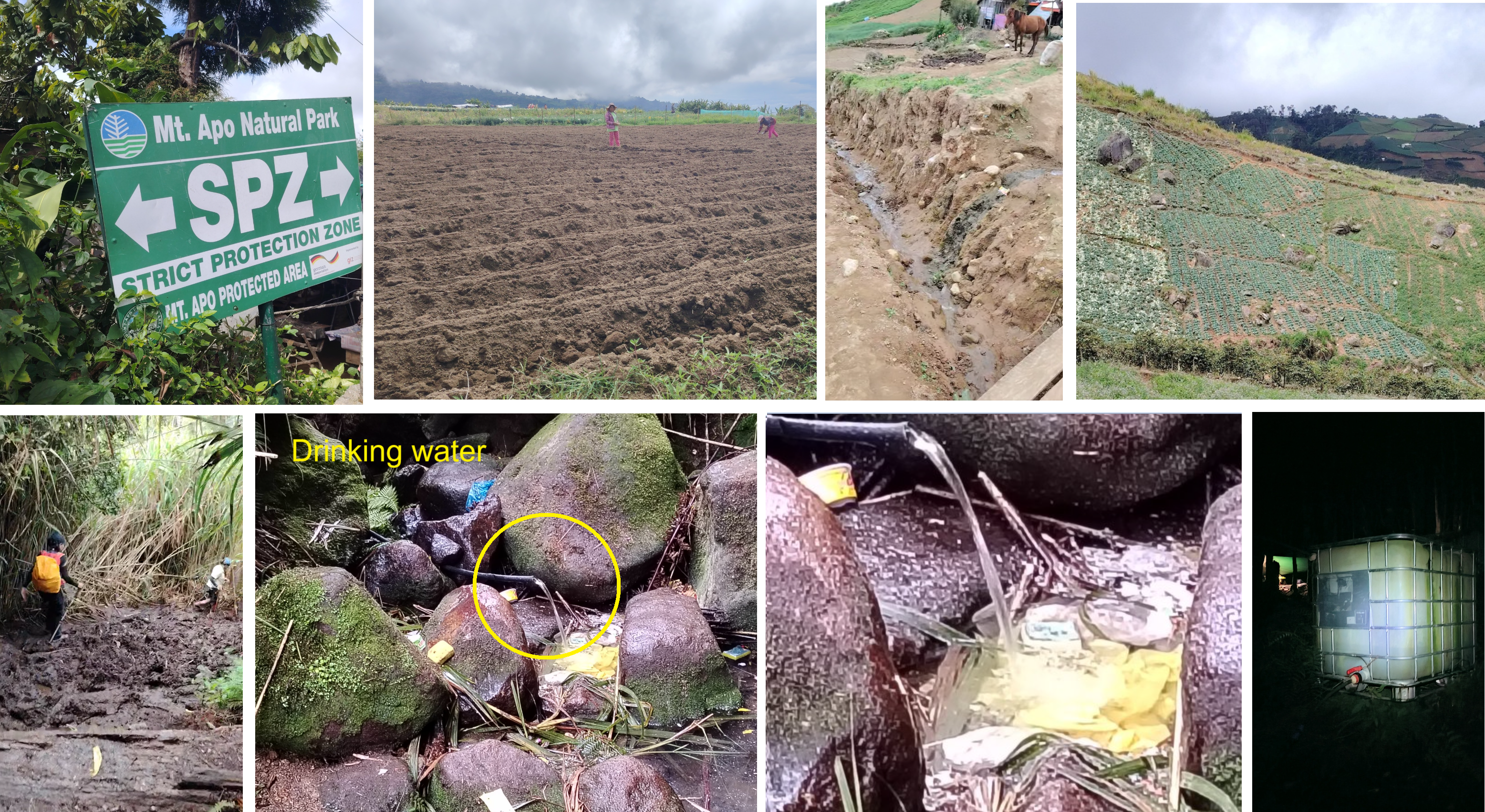
For Mt. Huraw in Samar, Apo offers a guiding light. From porter systems to capacity limits, from trail zoning to local benefit-sharing, Apo’s systems (and flaws) can inform better models for Samar's budding eco-adventure industry.
Fast Facts: Mount Apo Traverse (Kapatagan to Bansalan)
|
Item |
Detail |
|
Elevation |
2,954 meters (9,692 feet) |
|
Trailheads |
Kapatagan, Digos (ascent) – Bansalan (exit) |
|
Duration |
3 days |
|
Trail Type |
Traverse (Point-to-point) |
|
Difficulty |
Moderate to Difficult |
|
Permit |
Required; medical clearance within 3 days |
|
Porters |
₱750/day (15kg limit), excess: ₱75/kg |
|
Best Season |
March to May (dry season) |
|
Highlights |
Sulfur vents, crater lake, White Sand, summit view, cultural immersion |
Mount Apo reminded me that the most meaningful climbs don’t end at the summit — they continue in the way we bring lessons back down the mountain.
